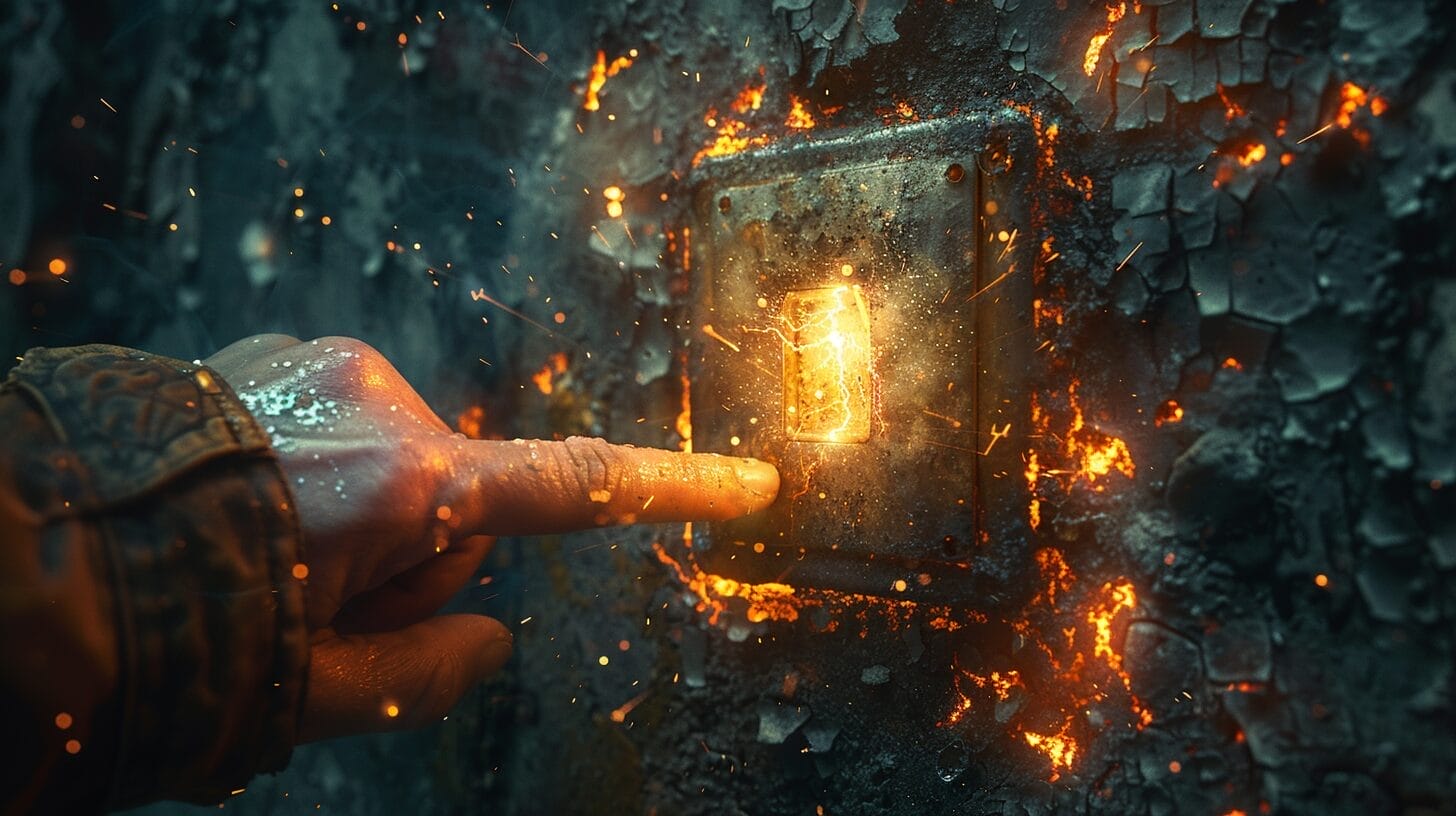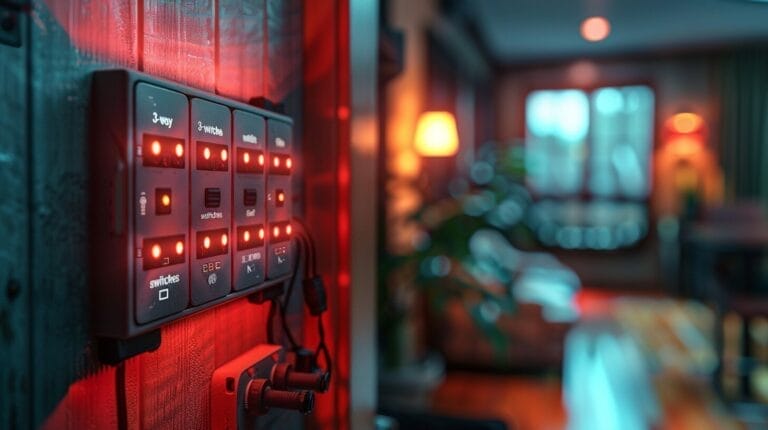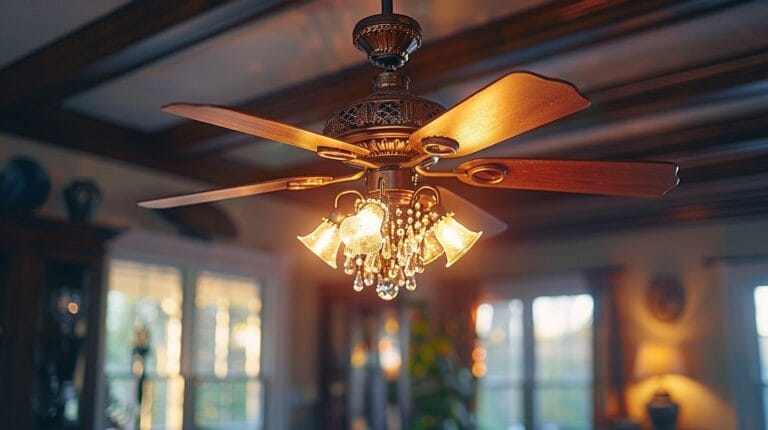Light Switch Is Hot: Learn Why and Find Solutions
Ever touched a light switch and found it hot? Curious why it happens and how to fix it? Let’s uncover the reasons behind hot light switches and explore solutions to keep your home safe and comfortable.
Key Takeaways
- Hot light switches indicate potential overload or faulty wiring.
- Immediate action is crucial to prevent electrical hazards.
- Contact a professional electrician for assessment and repairs.
- Turning off power at the circuit breaker can enhance safety.
- Consider repair or replacement based on the severity of the issue.
Understanding the Functionality and Mechanism of Light Switches
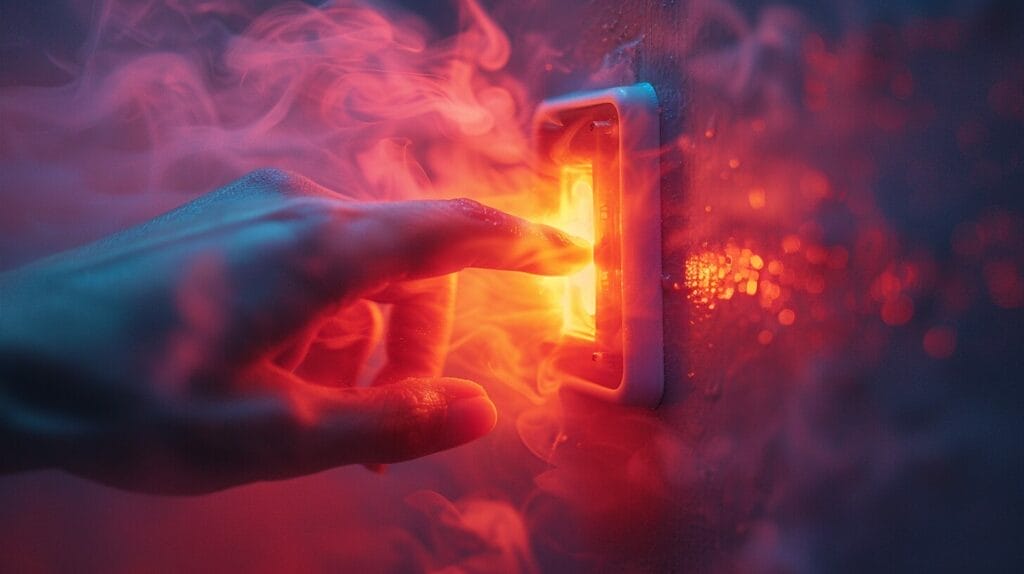
Understanding how light switches function is essential for homeowners and electricians alike. When a light switch is toggled on, electricity flows from the power source to the light fixture, illuminating the room and charging the environment. The switch acts as a gateway, controlling the flow of electricity to the light. It’s important to note that switches are rated to handle a specific amount of electrical current. Overloading this limit can cause overheating, which can make the switch hot, indicating it cannot handle the appropriate load.
The wiring behind the switch also plays a crucial role in its operation. Properly installed wiring ensures a safe and efficient flow of electricity and allows the light switch to function freely. If the wiring is faulty or damaged, it can impede the flow of electricity, leading to increased heat generation within the switch, potentially creating dangerous heat hazards. Understanding these aspects is key to ensuring the proper functioning and safety of your lighting systems.
Common Reasons Why Your Light Switch is Hot
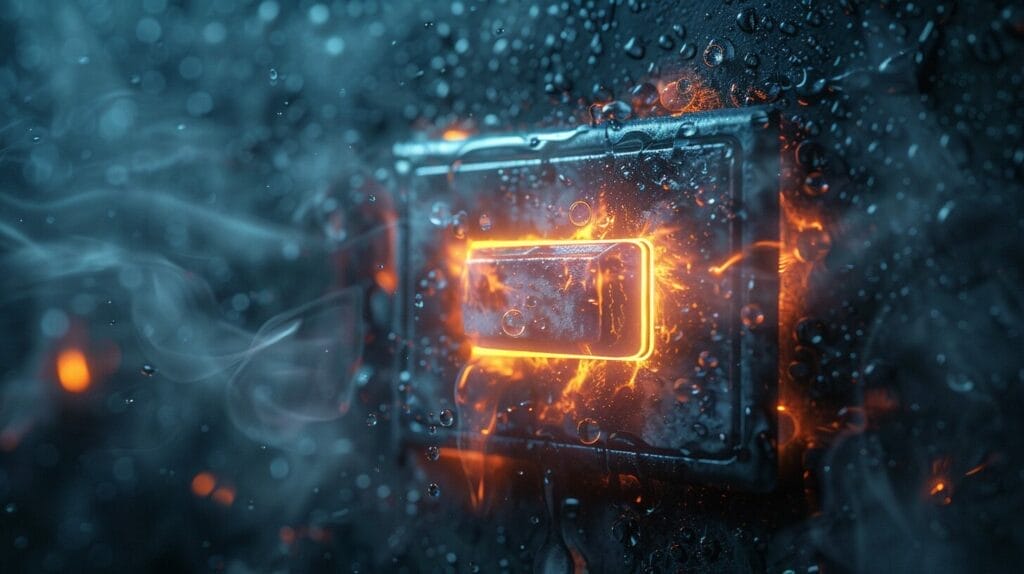
Several common issues can cause a light switch to become hot, including an overloaded switch, faulty wiring, the use of dimmer switches, or general electrical problems. Here is a breakdown of these common reasons:
- Overloaded switch: Excessive current flowing through the switch. Reduce the load on the switch to rectify this, ensuring it’s not creating heat unnecessarily.
- Faulty wiring: Poor or damaged wiring can lead to heat generation within a light switch, necessitating an inspection. Consult a qualified electrician to address this issue.
- Dimmer switches: These may generate heat during operation, indicating that they cannot handle the appropriate load. Ensure the switch is rated correctly to handle the load.
If you notice your light switch is hot, it is vital to address the issue promptly. For complex problems like faulty wiring or electrical issues, always seek assistance from a qualified electrician to ensure your safety and prevent potential electrical hazards.
Dangers Associated with a Hot Light Switch
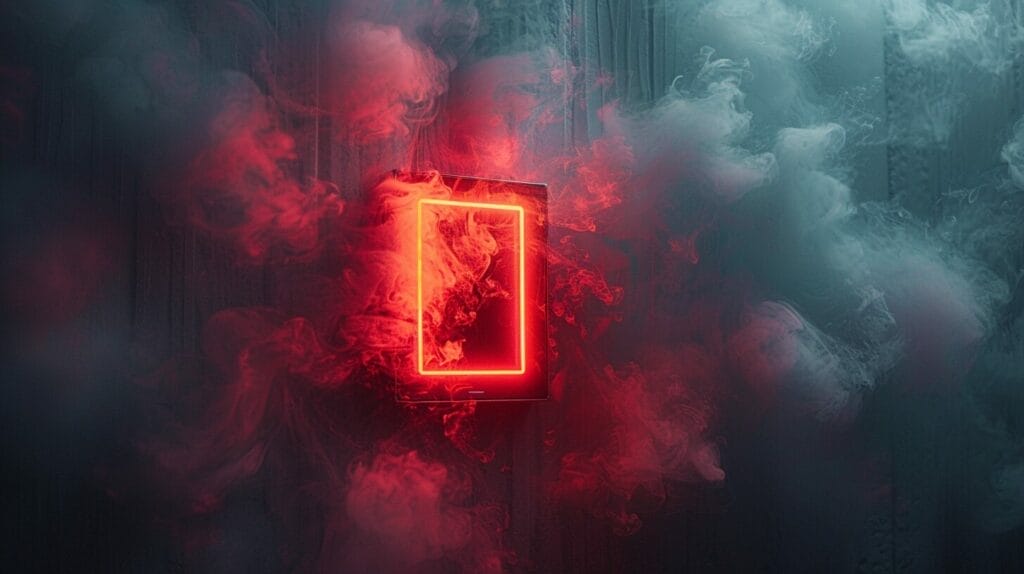
A hot light switch can be a warning sign of underlying issues like an overloaded switch, which can lead to electrical fires. Overheating can damage the switch and the surrounding circuit, posing a risk.
Additionally, a hot light switch can cause burns if touched accidentally, especially by children or pets. The presence of heat also indicates potential faulty wiring or other electrical problems that need immediate attention to prevent dangerous situations. Understanding these dangers underscores the importance of promptly addressing a hot light switch.
Steps to Take if Your Light Switch Feels Warm or Hot to Touch

If your light switch feels warm or hot to the touch, it’s important to prioritize safety by taking immediate action. Feeling heat from a light switch can be a sign of an underlying electrical issue that needs attention. The first step is to stop using the switch and check if it’s warm due to overloading or poor installation. If the switch continues to feel hot, it’s essential to contact a professional electrician promptly to assess the situation. Electricians have the expertise to identify the root cause of the overheating and can recommend the best course of action to rectify the problem.
While waiting for the electrician to arrive, there are temporary measures you can take to ensure safety, such as turning off the power to that switch at the circuit breaker. This simple step can help prevent any potential hazards until the issue is resolved. Remember, electrical problems shouldn’t be ignored, so always prioritize safety and seek professional help when dealing with a hot light switch.
Are Hot Light Switches and Broken Toggle Switches Related?
Hot light switch toggle problems can often be a result of a broken toggle switch. When the switch doesn’t make proper contact, it can cause overheating, resulting in a hot switch. It’s important to address this issue promptly to prevent any further electrical problems.
Repair and Replacement Options for a Hot Light Switch

To resolve a hot light switch issue, consider whether repair or replacement is the most suitable solution based on the severity of the problem. If the hot light switch is a result of a minor issue like loose wiring or a faulty connection, a repair might be all that’s needed. Repairs are usually more cost-effective and quicker to implement. However, if the problem is more severe, such as internal damage or excessive heat buildup, a replacement might be the safest and most efficient choice in the long run.
When opting for a repair, make sure that it’s done by a qualified electrician to guarantee safety and proper functioning. On the other hand, replacements provide an opportunity to upgrade to newer, more energy-efficient switches that can help prevent future hot switch issues. Additionally, investing in high-quality switches can reduce the likelihood of overheating. By choosing the right repair or replacement solution, you can ensure a safe and efficient lighting system in your home.
Conclusion
Overall, it’s important to address a hot light switch promptly to avoid any potential dangers. By understanding the reasons behind its heat, you can take appropriate steps to guarantee your safety and prevent any electrical hazards.
Whether it’s a simple repair or a full replacement, it’s essential to address the issue immediately. Remember, the safety of your home and family should always be a top priority.
Frequently Asked Questions
Why does my light switch get hot?
A light switch can get hot due to various reasons such as overload, faulty wiring, or a failing switch.
Is it normal for a light switch to feel warm to the touch?
It is normal for a light switch to feel slightly warm, but it should not be too hot to touch. If it gets too hot, there might be an issue.
How do I know if my light switch is overheating?
If your light switch is creating extreme heat or if you notice a small spark on the electrical contacts, it is a sign that the switch is overheating.
Can old light switches cause overheating?
Yes, old light switches with loose or broken electrical contacts can lead to overheating issues.
What should I do if my light switch is hot?
If your light switch is hot, it is a good idea to have it inspected by a professional electrician to determine the cause and address any potential safety hazards.

